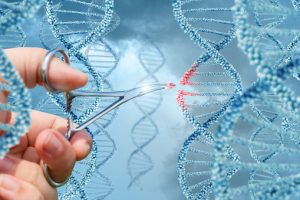 Gene editing scientists, for the first time, have successfully corrected a disease-causing mutation early in the development cycle of a developing embryo. What is more amazing is that this defect will not be passed down to future generations.
Gene editing scientists, for the first time, have successfully corrected a disease-causing mutation early in the development cycle of a developing embryo. What is more amazing is that this defect will not be passed down to future generations.
Gene editing technology paves the way
This breakthrough was done using a new technique with a device called the CRISPR-Cas9 system—a genome editing tool that is a faster, cheaper, and more accurate method for editing DNA. It has the unique ability to enable geneticists and medical researchers to remove, add, or alter sections of a DNA sequence.
Advertisement
“Thanks to advances in stem cell technologies and gene editing, we are finally starting to address disease-causing mutations that impact potentially millions of people. Gene editing is still in its infancy so even though this preliminary effort was found to be safe and effective, it is crucial that we continue to proceed with the utmost caution, paying the highest attention to ethical considerations,” says Juan Carlos Izpisua Belmonte, a professor in Salk’s Gene Expression Laboratory and a corresponding author of the paper.
Possible implications
This is what the field of medical science has been chasing for centuries—the power to cure countless diseases. However, CRISPR is still a relatively new technology and is far from being perfect. There is still the risk of introducing unintended mutations that could make things far worse than they are better.
Then there is the ethical concern. Is it right to genetically modify human beings?
Breakthroughs like this are made with the best intentions in mind. Imagine how great it would be to know that your baby will not suffer the same inherited disease you or a close family member has suffered from. Imagine if you could genetically tailor your offspring to inhibit the balding gene, prevent autoimmune disease, and even stop familial-linked cancer in its tracks.
In this experiment involving CRISPR, the researchers injected the best-performing editing components into healthy donor eggs newly fertilized with a donor’s sperm. They observed that the mutation responsible for a hereditary heart condition called hypertrophic cardiomyopathy (HCM)—the most common cause of death in otherwise healthy
athletes—had been successfully repaired.
Advertisement
The method proved to be safe and effective, with a high percentage of the embryos used in the study being repaired. The gene correction was also found not to induce detectable off-target mutations or genome instability.
The researchers behind this study find these results very promising, but stress that these are only preliminary outcomes with more research needed to be done.
“Our results demonstrate the great potential of embryonic gene editing, but we must continue to realistically assess the risks as well as the benefits,” adds Izpisua Belmonte.
Related: Gene editing technology may produce arthritis vaccine
